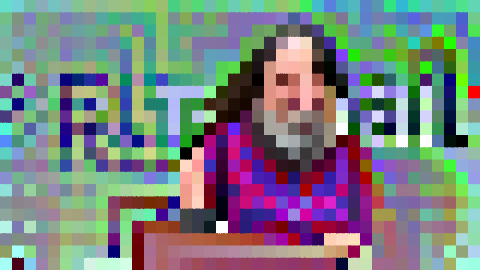I recently readed more about it, and the association with anarchy was immediate.
I really like it for two things first It could be another radicalization vector for people inside not that radical movement’s like some parts of the climate movement. And second it gives me and my comrades a vision and a world to fight for. There is a reason that optimism stands in the two first lines inside the Solarpunk manifesto.
We are solarpunks because optimism has been taken away from us and we are trying to take it back.
We are solarpunks because the only other options are denial or despair.
Also you are completely right with it being Anarchist:
At its core, Solarpunk is a vision of a future that embodies the best of what humanity can achieve: a post-scarcity, post-hierarchy, post-capitalistic world where humanity sees itself as part of nature and clean energy replaces fossil fuels.
Exactly!
This has some good thoughts on the matter: https://solarpunkanarchists.com/2018/05/15/solarpunk-as-anarchist-infrapolitics/
Very good read indeed.
Thanks for sharing! Adding to my reading list
Wanted to share some takeaways I liked from the reading: (Using read it later app Readwise Reader, but there’s open source-ish Omnivore which makes a great alternative)
Social transformation never happens through economic or legal changes alone. Those changes are always accompanied by alterations in the more informally transformative spheres of culture and ideology, shaping the nuts and bolts of how people think and act. Anarchists have always acknowledged this.
if there’s one thing anarchists are known for among the general public, it’s having a leg in several artistic, musical, and philosophical subcultures
Kropotkin and Goldman weren’t just exquisite theorists of class struggle and anarchisation, they also wrote entire books on Russian literature and modern theatre respectively.
I’ve noticed a tragic tendency as of late (i.e. the last couple of decades) to view anarchist activity in the cultural and ideological fronts as separate and apart from activity on the political and economic fronts. At worst, I’ve seen some involved in the latter dismiss most of those involved in the former as “apolitical” or as mere “lifestylists”, holding themselves up as exemplars of “real” anarchist action – which, from what I can see, seems to consist of writing articles for newspapers no one reads and occasionally waving a few red-and-black flags around at strikes and protests. If that’s what “real” political activity looks like, it doesn’t do much in terms of accomplishing libertarian political goals.
The bohemians, the hippies, the punks, and the techies have thus far given us lots of nice artworks, though they’ve failed to deliver the dissolution of the state and worker self-management of the economy.
On this issue, and despite the dismissals of much cultural-ideological activity as apolitical, I’d like to propose that both forms of activity are political, but political in different ways. One is infrapolitical (“infra-” meaning underneath), while the other is megapolitical (“mega-” meaning grand or overarching).
By infrapolitics, I mean the forms of cultural and ideological action people engage in which aren’t formally political, but nevertheless form the basis of social-political reality at both the interpersonal and systemic levels of society, as they shape the way we conceive of, relate to, and interact with the social reality. Things like making art, creating counter-cultural scenes, injecting political ideas into various cultural milieus, philosophising, and creating alternative forms of education.
By megapolitics, I mean most of what’s considered “political” in the traditional sense: trying to effect change in the functioning of the social system as a whole, in particular its governance and jurisprudence with regard to the people. Things like municipalism, syndicalism, and activism in the most familiar sense.
Infrapolitics should always be of interest to anarchist activism because it’s in infrapolitical spaces that the seeds of practical (megapolitival) change are sewed within the social imaginary.
labour as a practice is artisan-ised, emulating William Morris’s dream of work being made into play.
Solarpunk is futurist, but it’s a futurism of a rooted and practical kind.
What should make it of interest to anarchists is how similar the underlying values of solarpunk are to those of social anarchism, in particular to the post-scarcity anarchism of Murray Bookchin: decentralism, the blending of the ecological with the technological, the fusion of the functional with the ornamental, local autonomy, participatory decision-making, and unity-in-diversity
There’s a lot of overlap with lots of schools of anarchy. I think lots of the “punk” movements have been like that though.
a desirable vision is needed.
I think there are some valid aspects of it that we will most likely be forced to accepted within the next 20 years, as climate change begins to affect us all in a very severe manner.
Solarpunk could’ve been an update to stale sub-ideologies of Anarchism.
In online communities Solarpunk unfortunately is associated with greenwashing soil sealing, motorised individual transport and nuclear industry and others. This status makes it a product of climate delay propaganda currently and thus unusable.
I don’t know which “online communities” you refer to, but usually the exact opposite is the case. What you write is basically a list of things Solarpunk communities everywhere strongly oppose.
Perhaps your analysis conflates attempts, on one hand, to challenge prevailing assumptions through imaginative imagery, with, on the other hand, the also important attempts to propose objectively viable alternatives.
A lot of art I’ve seen from it has been from artists and not engineers. I know may sound like an odd complaint, but it has put me off from looking in deeper. I’ve looked at some of the art and just gone “it would be nice if it COULD work like that.” The one that I see frequently enough is the multistory building with different floors of farming.
I know art isn’t implementation. But the fact people think moving dirt from a place with good soil and conditions to growing plants to an area that is shit for it is just not looking at the consequences.
It’s like how the solution to cars aren’t EV’s, even if EV’s seem surface level obvious.
I love the aesthetic and ideas, but personally I couldn’t get into it that much. It
seemsfeels too unrealistic and a little like greenwashing (renewable energy and other high-tech is core to the ideology).A book featuring the style which I really liked was A Psalm for the Wild-Built.
How is it greenwashing? Greenwashing is capitalism pretending to be eco friendly. Solarpunk is explicitly anti capitalist.
I believe you can use greenwashing to describe more things than just capitalism pretending to be green.
For me especially the type of solarpunk aesthetic that centers fururistic cities, high tech and massive amounts of renewable energies kinda greenwashes the needed extraction of resources to achieve those aesthetics.
Most if not all folks I interacted with that seemed into solarpunk (users on slrpnk.net) where most likely not greenwashing things, but when I just google “solarpunk” my impression is more in line with the person you replied to.
That’s just the aesthetic. Solarpunk is fundamentally anarchist, and aims to end that exploitation, and the structures that feed on it.
Sorry, I used the wrong wording. I meant to write that it feels a little like greenwashing to me, because I don’t have a lot of faith in a “green transition” (not enough materials, exploitation of the global south etc…). But the good thing is that the solarpunk vision can work just as well in a low-tech environment.
As mentioned, solarpunk is highly focused on destroying capitalism. Ending that exploitation is a major goal
Solarpunk is very vulnerable to greenwashing, it’s happening now. AOC is “solarpunk” FYI. She’s cool and all, but when politicians in the imperial core are “solarpunk”… yeah…
There’s also a very technocratic susceptibility to exploitation. I see for example, lots of hydrogen propaganda making its way into solarpunk spaces. Basically, it’s not super dogmatic, which has lots of benefits but also leaves it to be heavily exploited and co-opted, giving a “solarpunk but capitalist” greenwashing campaign a very easy path
I suppose it’s possible to hear about solarpunk and misunderstand it badly enough to call yourself one without wanting degrowth or an end to capitalism.
Did you also read the second part A Prayer for the Crown-Shy? I like the first one more but both are worth reading.
And l agree that solarpunk is a bit too techno optimistic but still isn’t a good vision and that’s what the left lacks right now.
I have not, thanks for reminding me!






